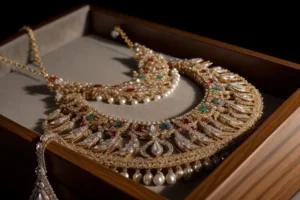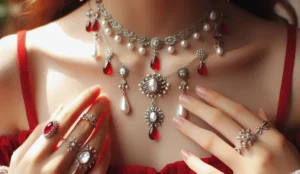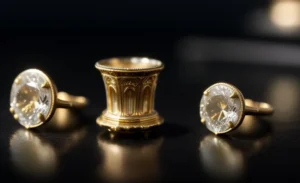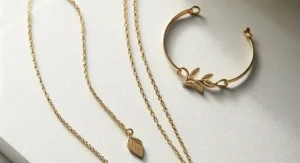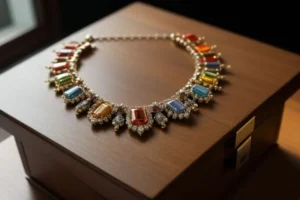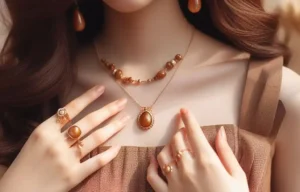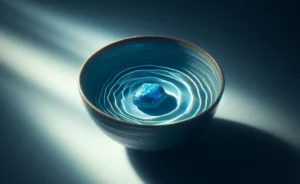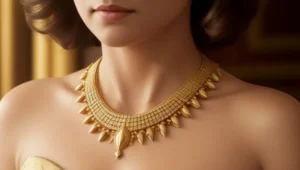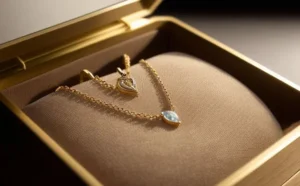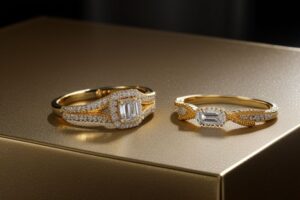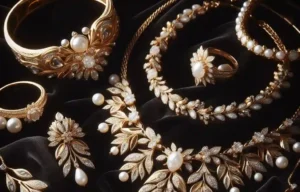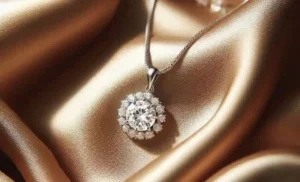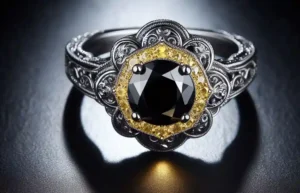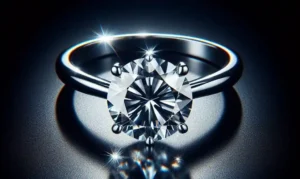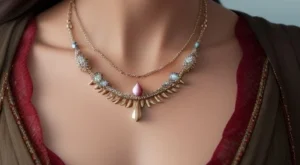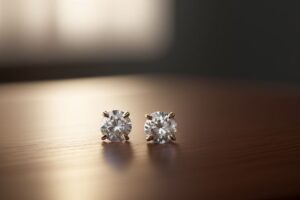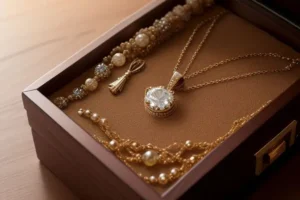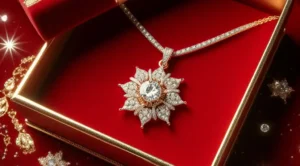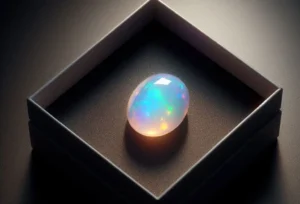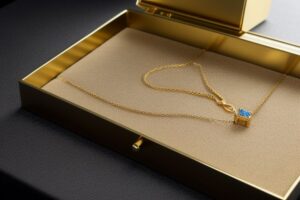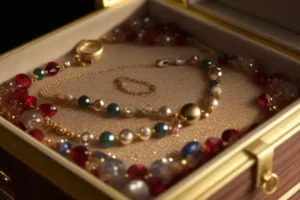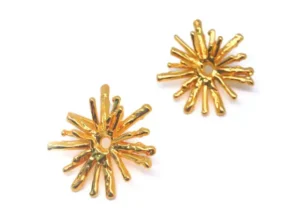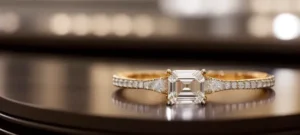Why Does Rose Quartz Turn White? With its soft, warm glow, Rose quartz has captivated hearts and adorned jewelry collections for centuries. It’s not just a stone; it’s a symbol of love, healing, and emotional connection.
However, imagine one day noticing your cherished rose quartz turning white. This transformation can be startling and even disheartening.
But there’s a fascinating world behind this color change, blending mysticism, science, and environmental factors. Let’s understand the magic behind why your rose quartz turns white.
Why Does Rose Quartz Turn White?

– Prolonged Sunlight Exposure: Continuous exposure to UV rays can bleach the natural pigments, causing the rose quartz to lose its pink hue.
– Heat Impact: High temperatures can alter the stone’s internal structure, affecting its colouration.
– Radiation Exposure: Natural or artificial radiation can change the valence of impurities like iron, leading to a color shift.
– Chemical Reactions: Exposure to harsh chemicals, including some cleaning agents and cosmetics, can react with the minerals in rose quartz, affecting its color.
– Natural Aging: Over time, the internal structure of the stone can shift, leading to a natural fading process.
– Improper Care: Not following proper care guidelines, such as cleaning with abrasive materials, can wear down the surface, dulling the color.
– Environmental Conditions: Extreme weather conditions, such as excessive humidity or dryness, can impact the quartz’s appearance.
– Mineral Depletion: The gradual leaching of coloring minerals from the stone can result in fading.
– Physical Damage: Scratches and other physical damage can make the stone appear lighter by affecting its surface reflection.
– Inherent Variability: Some rose quartz may naturally be lighter in colour and can appear white as their minor colouration fades with exposure to adverse conditions.
The Mystical Properties of Rose Quartz
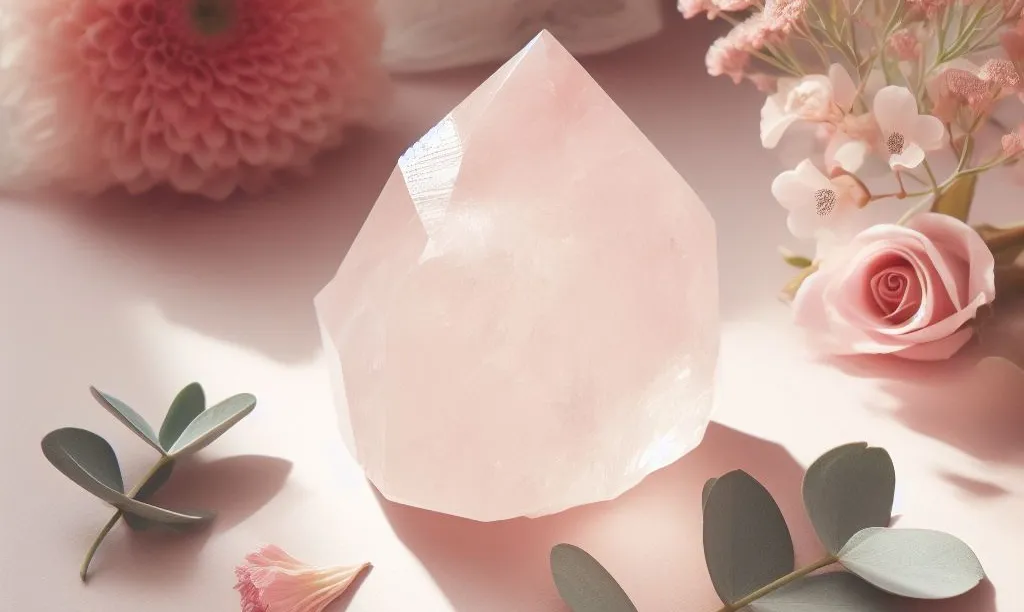
Rose quartz, often hailed as the “Love Stone,” holds a special place in the hearts of many for its ability to foster an environment of love and healing. This gemstone is believed to have the power to open the heart chakra, allowing for the free flow of love, kindness, and compassion.
It is said to attract love into one’s life, not just in the romantic sense, but also encouraging self-love, familial love, and the strengthening of friendships.
Beyond its capacity to invite love, rose quartz is thought to have a calming effect, soothing emotional wounds and fostering a sense of inner peace. Its gentle energy is believed to help release stress, ease anxiety, and promote a deeper connection with oneself and others.
In the realm of healing, rose quartz is associated with forgiveness and reconciliation. It helps individuals let go of negative emotions such as anger and resentment and embrace compassion and understanding.
This makes it an invaluable tool for those seeking to heal from past hurts or deepen their emotional connections.
Additionally, its energy is thought to support the healing of heart-related issues, both physical and emotional, reinforcing the stone’s association with the heart chakra.
In meditation and spiritual practices, rose quartz enhances love and harmony, aiding in the discovery of inner peace and the cultivation of a loving environment.
The Science Behind the Color of Rose Quartz

The enchanting pink color of rose quartz is primarily due to trace amounts of titanium, iron, or manganese within its structure. These trace elements are integrated into the quartz’s crystalline lattice during its formation, imparting the stone with its characteristic hue.
The specific concentration and distribution of these impurities directly influence the intensity and uniformity of the color. Additionally, microscopic inclusions, often fibrous, can further enhance the stone’s pink color through the scattering of light.
This phenomenon, known as Rayleigh scattering, is similar to what gives the sky its blue color and adds a subtle depth to the gemstone’s appearance.
It’s the delicate interplay between the quartz’s chemical composition and its crystallography that creates the spectrum of pink shades found in rose quartz, ranging from pale, almost invisible pink to rich, deep hues.
Alterations in the stone’s environment or structure can disrupt this balance, leading to changes in color. For instance, radiation exposure can affect the valence state of the iron impurities, which may alter the color.
Understanding this intricate balance provides insight into the reasons behind potential fading or color changes in rose quartz, illustrating the complex relationship between the stone’s elemental composition and its visual characteristics.
Environmental Factors Contributing to Color Change
The environment plays a crucial role in preserving rose quartz’s delicate hue. Factors such as exposure to sunlight can significantly affect the stone’s color, leading to a gradual fading to white.
Sunlight carries light and heat, which can exacerbate the fading process. Additionally, temperature fluctuations can influence the mineral structure’s stability within the rose quartz, further contributing to color changes.
Humidity is another contributing factor, where excessive moisture can erode the vibrancy of the stone, potentially leaching its color.
It’s important to note that these changes don’t occur overnight but result from prolonged exposure to detrimental conditions. Understanding these environmental influences is key to taking proactive measures in safeguarding the natural beauty and longevity of rose quartz.
By being mindful of where and how the stone is kept or worn, enthusiasts can minimize exposure to these risk factors.
While environmental effects on the color stability of rose quartz are undeniable, careful consideration and appropriate care can significantly extend the life and maintain the visual allure of this beloved gemstone.
The Role of Quality and Authenticity
As with any gemstone, the integrity and longevity of rose quartz are deeply influenced by its quality and authenticity. Natural, high-grade rose quartz exhibits a resilience that is less common in stones of lower quality or those that have been artificially colored or treated.
The vibrant, enduring color of a premium piece owes much to the meticulous conditions under which it formed, including the specific mineral contributions that lend it its pink hue.
These superior stones hold their color longer and better withstand environmental and external stresses that may cause discoloration.
Opting for authentic rose quartz from trusted sources ensures that you are investing in a gem with the strength to maintain its beauty over time.
Authenticity here means stones that have not been subjected to artificial treatments to enhance their color or clarity. Such treatments can compromise the stone’s structural integrity, making it more susceptible to fading and wear.
Understanding the pivotal role of quality and authenticity in preserving rose quartz’s color highlights the importance of mindful selection.
By prioritizing these factors when acquiring rose quartz, enthusiasts can enjoy the stone’s aesthetic and energetic benefits for longer, ensuring that the gem remains a vibrant symbol of love and healing in their collection.
Embracing Change: A New Perspective on Your Gemstone
Witnessing the transformation of your rose quartz from a vibrant pink to a more subdued white can evoke a range of emotions.
However, this shift offers an opportunity to view your cherished gemstone through a new lens. Just as life is marked by seasons of change, so too can the journey of our gemstones mirror these transitions.
The alteration in color does not detract from the stone’s inherent value or its unique role in your life. Instead, it can be seen as a reflection of personal evolution, an emblem of the passage of time, and a testament to the stone’s natural lifecycle.
By welcoming this change, you invite a deeper understanding and appreciation for your rose quartz, fostering a connection that transcends its physical appearance.
This new perspective encourages celebrating the gemstone’s journey alongside your own, highlighting the beauty found in transformation and the enduring essence that remains.
Embracing this shift helps to affirm that change, in all its forms, is an integral part of growth and a natural aspect of the world we share with these precious stones.
Preventative Measures to Protect Your Rose Quartz
To ensure the longevity and vibrancy of your rose quartz, it’s essential to adopt a proactive approach to its care. Begin by minimizing its exposure to direct sunlight, as UV rays can significantly accelerate the fading of its pink hue.
Likewise, shielding your stone from extreme temperature changes will help maintain its structural integrity and prevent color alteration.
It’s also advisable to protect your rose quartz from harsh chemicals in cleaning products, perfumes, and cosmetics. These chemicals can react with the stone’s natural elements, leading to discolouration.
When storing your rose quartz, opt for a cool, dry place, ideally separated from other jewellery, to avoid scratches and physical damage. Wrapping the stone in a soft cloth or placing it inside a padded box can provide additional protection.
Regular, gentle cleaning with mild soap and lukewarm water will help remove surface buildup without harming the stone. Ensure that your rose quartz is thoroughly dried after cleaning to prevent any moisture-related issues.
Implementing these measures will significantly contribute to preserving the delicate beauty of your rose quartz, allowing you to enjoy its aesthetic and healing qualities for years to come.
When to Seek Professional Advice
Navigating the nuances of rose quartz’s color changes can sometimes require expertise beyond personal research and care practices.
If you notice your rose quartz exhibiting dramatic alterations in color or appearance and your efforts to preserve its beauty don’t yield the desired results, reaching out to a gemology expert could provide clarity and solutions.
With their depth of knowledge on gemstones, these professionals can assess whether the changes in your stone are natural or indicative of a deeper issue.
They may also offer insight into restoration possibilities or confirm if the transformation is a natural part of the stone’s lifecycle. Additionally, a consultation with a reputable crystal healer could be beneficial if your concerns are more about the stone’s energetic aspects.
They can guide you on how to rejuvenate its vibrancy through energy-based practices. It’s crucial to select experts who have a proven track record and are recognized within their fields to ensure you receive accurate and helpful advice.
Whether your goal is to restore your rose quartz’s physical appearance or enhance its energetic properties, professional guidance can be a valuable resource in your journey with it.
FAQs
Can the color of faded rose quartz be restored?
Once rose quartz has significantly faded, the process is usually irreversible. Preventative measures are key to maintaining its vibrant hue.
Will a change in color impact the stone’s metaphysical properties?
The consensus among enthusiasts and healers is that the metaphysical properties of rose quartz are not diminished by color changes. Its energy of love and healing remains strong.
Is fading to white a common occurrence for rose quartz?
Fading is not inevitable for all rose quartz. The likelihood of such changes largely depends on the stone’s exposure to environmental factors and its overall quality and care.
How do I determine the quality of my rose quartz?
Evaluating the uniformity of color, clarity, and the presence of natural, unaltered surfaces can indicate quality. Trusting purchases from reputable sources is also crucial for ensuring you receive a high-quality stone.






